#carnegie mellon university libraries
Photo
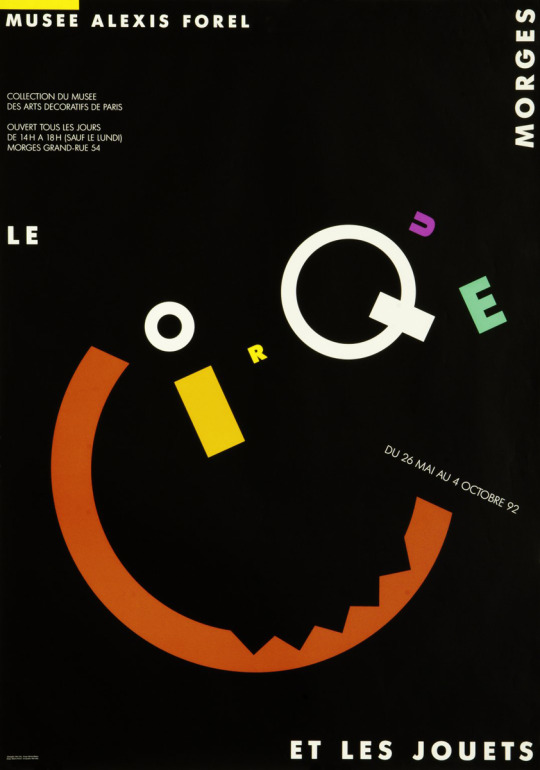
Martine Waltzer, Le Cirque et les jouets, Musée Alexis Forel, Morges, May 26 – October 4, 1992 [Carnegie Mellon University Libraries, Pittsburgh, PA]
#graphic design#typography#art#exhibition#poster#martine waltzer#wogd#musée alexis forel#carnegie mellon university libraries#1990s
61 notes
·
View notes
Photo
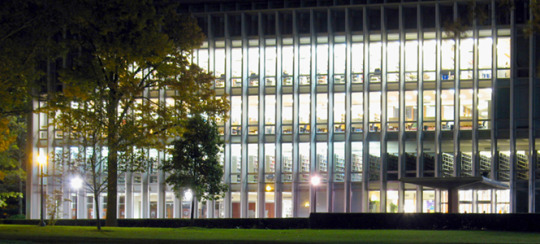

(via On the bumpy bus ride of tracking myself down.) This was the day I realized that there was something very, very suspicious about how, where and to whom I was born. It began my lifelong quest to uncover some startling truths.
#adopted#pittsburgh#division of statistics#Allegheny#birth cretificate#north huntington#downtown Pittsburgh#CMU#Carnegie Mellon#Carnegie Mellon University#Hunt Library#Seventh Avenue Pittsburgh PA#Department of Commerce Building#bus ride#PAT bus#Port Authority#Port Authority Transit#Port Authority Transit of Allegheny County#sunny day#gorgeous day
0 notes
Text
ANDREW CARNEGIE
As Americans, this is a name we have all come to recognize. Carnegie was an incredibly successful industrialist and philanthropist in the late 19th century and early 20th century.

He was born in Dunfermline, Scotland but his family moved to Pittsburgh, Pennsylvania when he was a child. He built Pittsburgh's Carnegie Steel Company which he sold to J.P. Morgan for a whopping $300 mill ($10 bill today).
His biggest contributions came after he sold his steel company. He believed that the rich had a duty to improve society so he focused his efforts on building local libraries, world peace, education, and scientific research. He are some of the buildings he funded or had built:
Carnegie Hall

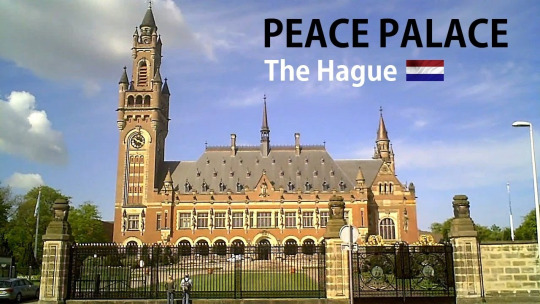

Carnegie Institute of Science

Carnegie Mellon University
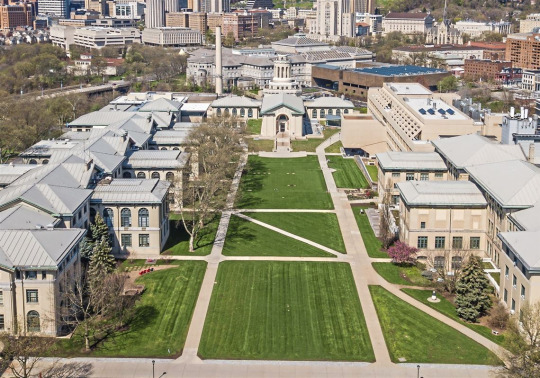
Carnegie Museums
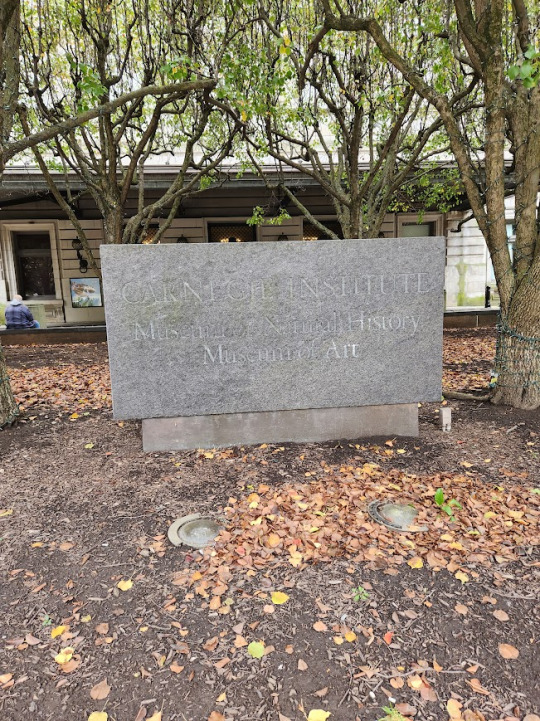
Carnegie was fascinated with dinosaurs. He actually funded the digs at Dinosaur National Monument (yes, that place exists thanks to him).
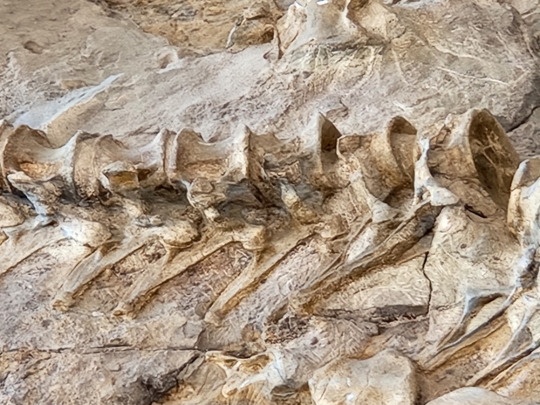
He was especially proud of Dippy, the first Diplodocus ever discovered.
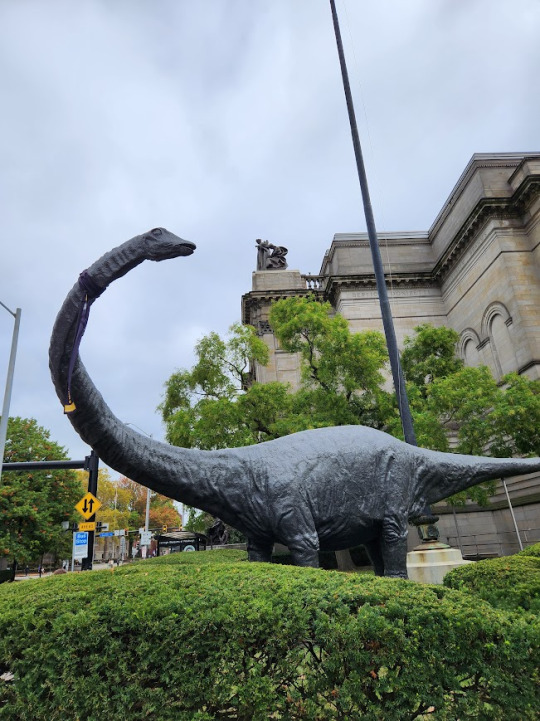
The species name was actually named for him (Diplodocus carnegii) and the full skeleton stands in Dinosaur Hall today at the Carnegie Museum of Natural History. Carngie had several copies of the skeleton made and shipped to other museums in South America and Europe.

Carnegie donated over $250,000 to paleontology for "collecting, preparing and studying dinosaur and other vertebrate fossils." If only we had as generous a wealthy benefactor for our site. That is the dream.
While Diplodocus was the most famous dinosaur connected to Carnegie, there was one other fairly famous dinosaur connected to him. You've probably heard of this guy:

The American Museum of Natural History in New York sold the skeleton to Carnegie during WWII when they thought in would be bombed by the Germans. The skeleton has stood in Carnegie's museum ever since.
#paleontology#dinosaur#fossils#fun facts#dinosaur national monument#andrew carnegie#history#pittsburgh pa#carnegie museum of natural history
8 notes
·
View notes
Text
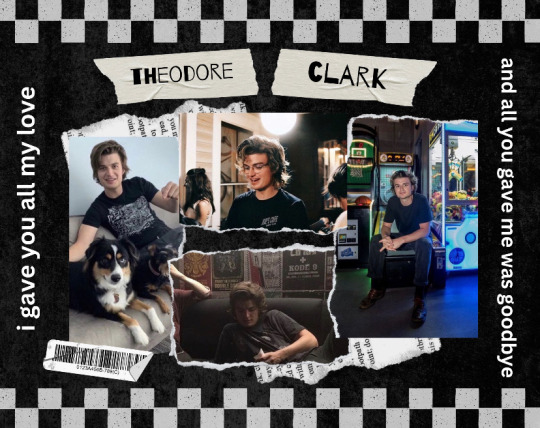
(joe keery, he/him/his, cismale) who is theo clark anyways? ew. you don’t know about him, we’ll bet you want to. they’re feeling thirty and singing karaoke feels like a perfect night to them. rumor has it they’re indecisive and have low self-esteem because they care, but they’re also intelligent and adaptable in the best way. he works to make a little money as an employee at the animal shelter (...but he also walks dogs on rover on the side). they’ve rented on a place on cornelia street in the form of an an apartment. back to december and long live are the song they could dance to the beat of forevermore. (tw: cancer, about 3/4's of the way into the "backstory" section here!)
basics.
full name: theodore james clark.
nicknames: honestly? most people just call him theo, though teddy is a family nickname he'd probably still respond to.
gender/pronouns: cismale/he/him/his.
sexual orientation: extremely bisexual.
birthday: july 22nd.
star sign: cancer. cancers are known to be highly intuitive, sensitive...and insecure.
occupation: proud employee of the animal care center of new york...and he walks dogs for rover on the side.
personality.
positive traits: intelligent, adaptable, caring, honest, empathetic.
negative traits: realistic pessimistic, indecisive, blunt, sensitive…but like not talking about those feelings ever?, low self esteem while being self-centered.
hogwarts house: i know jrk sucks and we do not claim her but the man is a hufflepuff…but a burned one.
alignment: chaotic neutral.
ennegram: 4w5.
personality type: infj.
backstory.
his childhood was normal. happy, even. except for the part where his parents never let him have a dog because they were 'too busy' for one.
because his parents both had pretty demanding jobs, he was put in a ton of after school activities, but he kind of sucked at sports. so he joined boy scouts and took a bunch of different music lessons. he's pretty decent at guitar and piano and can fake his way through some accordion in a pinch.
theo is the oldest of three and was the child his parents placed their hopes on. his mother is a well-known pediatric oncologist at pittsburgh children's hospital and his father teaches biology at carnegie mellon. everyone assumed that theo would follow in their footsteps. and he did...sort of
he studied biology even though it wasn't really his thing because he wasn't paying for college, his parents were...and he minored in both music theory and psychology, which he liked more.
he met one of he most important people in his life while attending duquesne university in caroline davis.
...they didn't hit it off right away. in fact, at first, she was a bit of a thorn in his side. but a little bonding over a mutual love of music (and the food trucks on campus...) and they clicked. he asked her out around homecoming that first year and the rest is history.
they dated for years. it was very serious. he was two weeks away from buying a ring, honestly. but they spent a really big chunk of their relationship long-distance and it was just...hard. he really fucking loves loved her. but you know what they say...if you love it, let it go. or whatever.
during college, he made spending money at a work study job at the school library, but he made more walking dogs so he quit the work study job and started pet-sitting and dog walking most evenings.
this is where his love of animals began and only started to grow the more he spent times with classmates' and neighbors' pets. he decided to apply to vet school instead of med school, much to his mom's chagrin.
he got in!
...and he dropped out 2 semesters in because he hated it.
theo kept up a pretty big lie for the better part of a year, working odd jobs around pittsburgh and maintaining his off-campus apartment and dodging his parents' questions...until his dad was a guest lecturer to one of his vet school classes and he was nowhere to be found.
his parents gave him two choices: go back to vet school or go back to college and get a degree he would use.
theo chose neither. he packed up his shit, hopped on a bus, and moved to new york city with a collection of cassette tapes, a duffel bag of clothes, and whatever was left in his bank account to his name.
his parents didn't exactly disown him during this period, but they didn't reach out. he found out his mom was diagnosed with an aggressive form of breast cancer about 2 months after his move...and she'd been diagnosed a month prior. he heard it from one of his siblings and tried to reach out, but didn't get a response.
she passed away eight months after her diagnosis. he never got a chance to make amends and it's one of his biggest regrets.
he has since reconciled with his dad, but that's something that just..you don't just get over that. he's struggled with it mightily and with the help of a good therapist, he's starting to forgive himself. some.
he intended on reconnecting with caroline when he got there but...well, that didn't turn out so well.
so he couch surfed for a while until he could accept the first non-sketchy craigslist roommate ad he could find and moved into his cornelia street apartment.
he's not sure what he wants to do, really, so he's worked a lot of odd jobs since moving to the city. he's worked at almost every starbucks in an eight block radius of his apartment, bartended for a while, tried his hand working a food truck...but nothing seemed to stick. he paid rent by ubereats-ing most months, until he started walking neighbors' dogs and found something he kind-of-doesn't-hate.
during this in-between time is when he sort of got back into music. one job, he played piano in a restaurant's main dining room. another was a bar where he sweet talked his way into a few gigs. probably ended up meeting the rest of the electric touch crew during this period!
now he's working at the animal shelter, walking dogs using rover, and playing some gigs on the side. thank god for dogs and music.
plots n' stuff.
a roommate. or a few? i could see him having a few to keep costs low and i didn't snag any of the premade skellies for this so if you're down i'm down
found family/besties. i love those vibes especially given he's essentially upped and move away from home knowing like 2 people in the entire city.
people with dogs. either people whose dogs he walks or neighbors who happen to have them. he's like a dog whisperer so if you need a pet sitter he's your guy.
or! shelter volunteers!!!
people from any and all odd job he used to have. like a regular at the coffee shop who can't get their order right now because he left or a co-worker who helped him create a sandwich that's still on a menu at a local restaurant?
random hookups would be an option tbh. he came to new york intending to, like, win back his ex in some kind of rom-com bullshit way, but...well, it hasn't worked out so far.
someone who thought their hookup was more serious than it was would be kind of funny too. we live for miscommunications.
would love some kind of enemies/animosity plot. we'd have to talk it through. could've started with something little and spiraled or maybe they're just besties with caroline and are on her side. or maybe he accidentally ran over your muse's dog's tail on his bike :/
i'm dani. 32. friendly, promise! and i'm open to plotting pretty much anything, honestly! DM's here or on discord are always open to figure some stuff out. i'm danisaurus. over on discord and i'm really looking forward to writing with you all!
#cornelia.intro#//hi i'm dani and i never learned to shut the fuck up#//excited to write with you! some plots are towards the end but i'm very flexible i promise#//also thanks to alyssa for this pretty graphic bc i'm useless at that sorta thing <333
7 notes
·
View notes
Photo
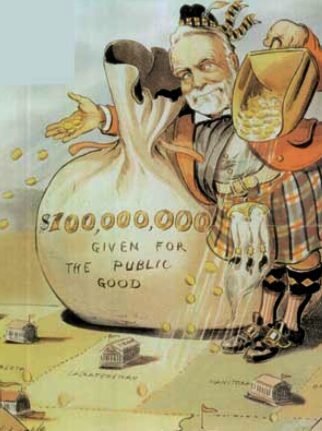



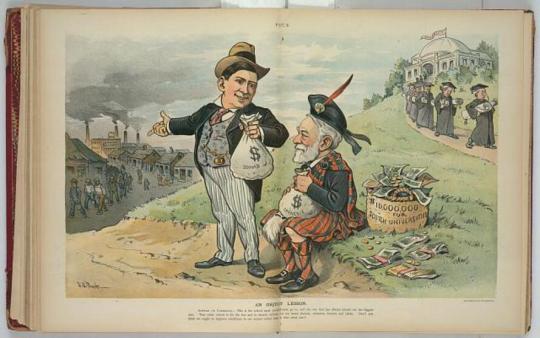

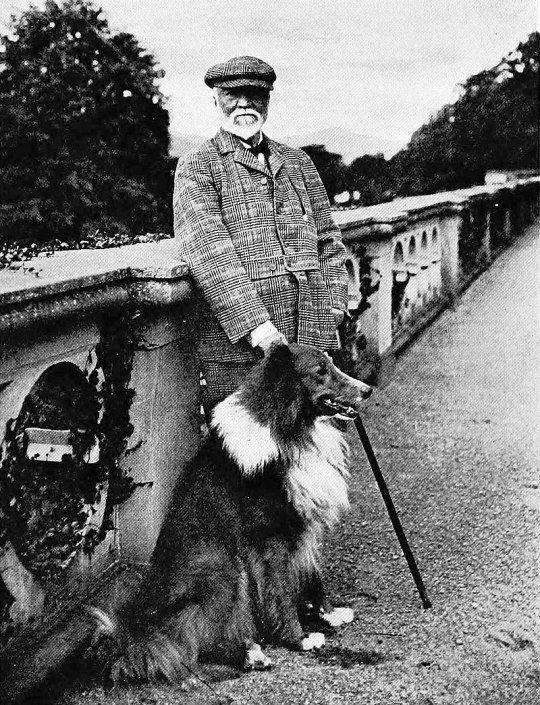
On August 11th 1919 Andrew Carnegie, the Dunfermline-born steel industrialist and philanthropist, died.
During the late 19th centuries, several entrepreneurs became famous due to their wealth and influence on society. Carnegie was mostly famous due to his reputation for philanthropy. I’ll focus on his philanthropy in this post.
Carnegie was born in the 25th of November, 1835 in Dunfermline, Scotland. The family was extremely poor. His father, William, was a hand-loom weaver and his mother, Margaret, repaired shoes. William refused to work in the local factories at the turn of the industrial revolution, which further devastated the family’s finances. Growing up, Carnegie was inspired by the commitment and hard work of his mother compared to his father, which she did in the name of providing a better future for her children. In fact, it was Margaret, who decided emigrated to America in 1848.
Carnegie’s uncle, George Lauder Sr., a political leader in Scotland deeply influence him as a boy by introducing him to the writings of Robert Burns and historical Scottish heroes such as Robert the Bruce, William Wallace and Rob Roy.
During his teen years, he was barred from entering the local library due to a new rule that declared that only patrons of the school could enter. He ended up writing a letter to the council and the newspapers, which resulted in opening all the libraries in Pittsburgh to the youth population. His love for libraries stretched on to his years of philanthropy where he established and funded
The first Carnegie library was built in Andrew Carnegie's hometown of Dunfermline, Scotland. It opened to the public in 1883 with Carnegie's "Let there be light" motto carved into the building's sandstone entrance, in total he helped fund and build a total of 2,509 libraries around the world, now tell me has any other person in history done anything like this?
He also established large pension funds for his former employees at Homestead and, in 1905, for American college professors.
It wasn’t all about libraries though, he had a lifelong appreciation of equality, social justice, and education, he established numerous foundations and related causes. This included the Carnegie Endowment for International Peace, Carnegie Institution of Science and the Carnegie-Mellon University. He further established the Carnegie Dunfermline Trust to enrich the lives of the population of his birth town Then where were the Carnegie Trust for the Universities of Scotland, Carnegie Hero Fund, and the Carnegie Museums of Pittsburgh, among others.
In 1911, he became a sympathetic benefactor to George Ellery Hale, who was trying to build the 100 inch Hooker Telescope at Mount Wilson, and donated an additional $10 million to the Carnegie Institution. He also gave a further $10 million in 1913 to endow the Carnegie United Kingdom Trust, which was a grant-making foundation. The trust is still going today as a Wellbeing charity, it’s headquarters are in Carnegie’s hometown,, Dunfermline.
Andrew Carnegie is known as the "Patron Saint of Librarie! he was also given the title The Man of Steel long before Clark Kent stole it off him as Superman. Although he spent the majority of his life in the U.S he never forgot his roots and visited Scotland, first in 1881 with his mother and family to lay the foundation stone of the “Carnegie library” in Dunfermline, the last photo is Carnegie at Skibo Castle, 1914, his patriotism for Scotland did not go unnoticed, another nickname he was given was "the Star-Spangled Scotsman."
In the U.S you will find at least 6 places named after him, they are Carnegie, Georgia Carnegie, Minnesota Carnegie, Oklahoma Carnegie, Pennsylvania Carnegie, Wisconsin Lake Carnegie (New Jersey), at Princeton University. New York also has The Carnegie Club, not to be outdone we in Scotland also have a Carnegie Club at Skibo Castle, a place he first visited in 1897, a year later he purchased the castle and its 28,000-acres for £85,000, but spent over 2 million pound transforming the estate into what he rightly termed 'Heaven on Earth'. At Skibo's heart lies the Carnegie Links, on the shores of the beautiful Dornoch Firth. The course is rated amongst the world's finest and played by some of the sport's best.
Skibo stayed with the Carnegie family until 1982.
Today, 103 years after his death 26 organizations worldwide still bear Carnegie's name. They carry on work in fields as diverse as art, education, international affairs, peace, and scientific research.
41 notes
·
View notes
Text
Day 3/50


Studied SDLC phases in my Software Engineering class, articles and pronouns in my communication skills class, and Database Architecture in my DBMS lecture.
It rained alot at the campus today. But the breeze felt soothing. I went on a walk with my roommate and had pani puri and vanilla ice-cream to treat ourselves on this mediocre day.
I also issued this beautiful book from the central library. It's called The Last Lecture by Randy Pausch, a CS professor at Carnegie Mellon University. I am loving it so far!!
#student life#studyblr#studyspo#productivity#studying#aesthetic#dark acadamia aesthetic#dark academia#studyblr india#study motivation#computer science#studyblr community challenge#50 days productivity challenge#uni life#uni#university#lpu
11 notes
·
View notes
Text
Un hackathon de alfabetización en IA de las bibliotecas amplía los recursos educativos abiertos
Carnegie Mellon University Libraries. (2024, April). AI literacy hackathon. Recuperado de https://www.library.cmu.edu/about/news/2024-04/ai-literacy-hackathon
El miércoles 3 de abril, especialistas de diversas instituciones visitaron las Bibliotecas para participar en un Hackatón de Recursos de Alfabetización en Inteligencia Artificial. El objetivo del evento fue reunir a bibliotecarios…

View On WordPress
0 notes
Text
Today at the OCPL: The 5th Annual Ann Thomas Memorial Lecture Featuring Alvin Hall

Ann Thomas was an optimistic, courageous woman, a nurse, educator, pioneer, and dedicated patron of the Ohio County Public Library, who was recently inducted into the Wheeling Hall of Fame. After she passed on February 22, 2019, the Library's Lunch With Books program launched an annual memorial lecture series in her honor.
Distinguished guests have included historian Dr. Joe Trotter of Carnegie Mellon University, Affrilachian poet Crystal Wilkinson, author and activist Dr. William Turner (pictured above right with Ann Thomas's granddaughter Carrie Ann), and Michelle Duster, great-granddaughter of civil rights legend, Ida B. Wells.
The series's 2024 guest will be Alvin Hall, author of Driving the Green Book. On the BBC, Hall hosted the award-winning series, "Your Money or Your Life," on which he offered both practical financial and psychological advice. He is an internationally renowned financial educator, award-winning television and radio broadcaster, artist, and bestselling author.
In the summer of 2019, Mr. Hall hit the road, with companions Janée Woods Weber and Oluwakemi (Kemi) Aladesuyi, for a 12-day, 2,000-mile trip from Detroit to New Orleans. The route was based on information gathered from the historic travel guide, The "Negro Motorist Green Book." The Green Book was designed to help African Americans while traveling to avoid places that would turn them away due to Jim Crow segregation and instead lead them to establishments where they would be more welcome. The people Hall interviewed shared powerful stories and memories of that time that became the center of the award-winning podcast and book, "Driving the Green Book. "
"Singletary's," aka "The Dixie," the Wheeling restaurant owned by Ann Thomas's aunt and uncle, once appeared in the Green Book as did a few other establishments like Doc White's Pharmacy.
Read More About Wheeling in the Green Book.
The 2024 Ann Thomas Memorial Lecture will take place at Lunch With Books TODAY, February 20, 2024 at noon. The Library has copies of the book available for purchase and signing by Mr. Hall (Hardcover $20, inquire by email). For more information, check the Library's website at www.ohiocountylibrary.org, or call 304-232-0244.
The Next Lunch With Books program on Feb. 20 at noon: The Ann Thomas Lecture featuring Alvin Hall, author of "Driving the Green Book." See below for details.
Read the full article
0 notes
Text
Systems & Cybernetics Site Map & Web Stuff
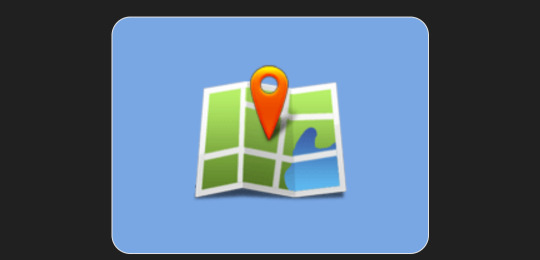
IconArchive.com
Diego Azeta blogs:
» Sys•Cyber ✴️🔆✴️ The real cybernetics
» Diego•Azeta 🌐 Azeta Azota
» La•Colonia 🇵🇷 World's oldest colony*
*World's most experienced colony (®Pan Am™)
Sys•Cyber ✴️🔆✴️ blog:
American Society for Cybernetics
Cognitive Science Society
International Society for Systems Sciences
Fractal self-similarity
Principia Cybernetica
Simulation Modeling Software Analyze • Visualize • Optimize
AnyLogic - agent-based modeling (ABM), discrete event simulation (DES), system dynamics (SD) modeling
NetLogo - ABM development environment
Mesa - Python ABM
AgentPy - Python ABM library
Simantics System Dynamics - open source SD modeling & simulation software
Insight Maker - ABM & SD online simulation
Systems Dynamics Society - core software
Systems Dynamics Society - web-based tools
Capterra - best free simulation software
Online Resources
Computer Modeling and Simulation by Ángel A. Juan Pérez, Open University of Catalonia. A brief overview of DES. (PDF)
Gentle Intro Discrete Event Simulation
Intro Discrete Event Simulation (PDF)
Intro to Modeling and Analysis of Complex Systems by Hiroki Sayama, SUNY Binghamton
Complexity - Wikipedia
Complex System - Wikipedia
Principles of Systems Science - U Wash PDF
Systems Theory - Wikipedia
Cybernetics and Systems (open journal)
International Encyclopedia of Systems and Cybernetics 2e
The Limits to Growth - The classic world sim, now more relevant than ever. 🌟🌟🌟🌟🌟
System Dynamics - Wikipedia
What Is System Dynamics - SD Society
Intro System Dynamics - MIT OCW
The Beginnings of SD - Jay W. Forrester
Mathematics of SD - Worcester Polytechnic
Descriptive Statistics - Bhandari @ Scribbr
Inferential Statistics - Bhandari @ Scribbr
Descriptive vs inferential Statistics - by Zach @ Statology
Bayesian Statistics - Wikipedia
Bayesian Statistics & Modeling - Gelman
Open Access Textbooks 📚
OAT Resource Directory - U Buffalo
Directory of Open Access Books
Math Open Textbooks - AI Math
LibreTexts
• LibreTexts Systems Engineering
Open Textbook Library
OpenStax
OER Commons Open Textbooks
Milne Open Textbooks - SUNY
IntechOpen Books
Merlot Materials
Saylor Academy Open Textbooks
Find e-Books/Books in general:
Guide to e-Books - UC Berkeley
18 Free e-Book Sites - Lifewire
Index of Books - Google Books
Open Library - Internet Archive
Lifelong Learning - Free
Carnegie-Mellon Open Learning
MIT Open Learning
Open Michigan
Open Yale
Stanford Online
Systems Pre/Co-reqs
Recommended for learners of systems science, cyber systems analysis, and cyber systems engineering. Work at your own pace.
Probability & Statistics
Probability & Statistics - Carnegie-Mellon OLI
Intro Probability & Statistics - MIT OCW
• Introductory Statistics with Randomization and Simulation (Open Textbook Library)
• Intro Bayesian Statistics - Rice, U Wash
Linear Algebra
Linear Algebra - Strang, MIT OCW
• Linear Algebra (text) - Pinkham, Columbia
• Understanding Linear Algebra - Austin
Python Programming
🌟 PythonAnywhere - Online IDE
• Getting Started Python - Michigan Online
• Think Python 2e - Downey
• Intro Computer Science Python - MIT OCW
• Python online tutorial - Google
• Core Python Tutorials - Real Python.com
Linear Programming
Linear Programming (basic ideas) - OU
• LP (basic ideas) mini-text (PDF) - OU
Economics
Microeconomics - Gruber, MIT OCW
• Intermediate Microeconomics - Emerson
Game Theory
• Game Theory - Open Yale Courses
• Game Theory - Stanford Online
• Game Theory 101 video course - Spaniel
Logic
• Logic & Proofs - Carnegie-Mellon OLI
• Logic I - MIT OCW
• Intro Logic and Critical Thinking (text) - Van Cleave, OTL
Systems Thinking
• Systems Thinking Books - Goodreads
• Intro Systems Thinking - UN ESCAP (PDF)
• Introduction to Industrial Engineering by Bonnie Boardman, U Texas at Arlington
Calculus & Differential Equations
Calculus Made Easy - An elegant introduction
Coursera Calculus courses
edX Calculus courses
MIT Calculus courses - MIT OCW
Diffy Qs: Differential Equations for Engineers - Jiří Lebl (textbook)
Differential Equations: An Introduction for Engineers - Matthew Charley (textbook)
Differential Equations - U Toronto (PDF)
You need not be an expert at solving DEs to work productively in cyber systems analysis. SD simulation software do that automatically with built-in numerical algorithms. But you should know what the DE means and does in the model. The same holds true for other technical details, such as random number generation and statistical measures, in different modeling and simulation paradigms. The conceptual ideas must be well understood; the computational aspects are best delegated to the modeling platform.
Thought of the day: Investing your time in becoming conversant with cybernetic system analysis methods is far superior to wasting it watching TV.
Cyber systems analysts think much better than non-analysts and are excellent at multi-factor problem solving, enterprise or institutional policy design, and strategic decision making. They are skilled in transforming conceptual insights into effective operational solutions.
Cyberneticians were key to the rise of cognitive science as a modern scientific discipline. They were pivotal in overcoming resistance to new ideas in psychiatry and psychology, especially in doctrinaire behaviorism.
Traditional fields of inquiry are often biased by conceiving problems and proposed solutions solely from their disciplinary perspective. This can turn out to be a hindrance. Cyber systems analysis is trans-disciplinary and eclectic. As such it tends to be more open in recognizing issues and ascertaining workable solutions to complex real-world problems.
If you want to change the world without waiting forever for change to happen, consider using cybernetic systems analysis. Effective results. Efficient and functional. Less prone to risk yet significantly more cost effective than traditional organizational reform approaches.
0 notes
Photo
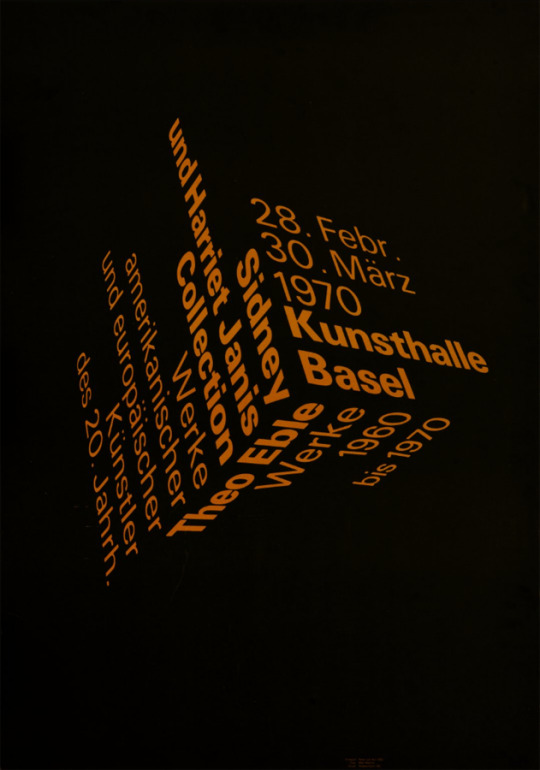
Peter von Arx – Max Mathys (photograph), Sidney und Harriet Janis Collection. Werke amerikanischer und europäischer Künstler des 20. Jahrh / Theo Eble. Werke 1960 bis 1970, Kunsthalle Basel, February 28 – March 30, 1970 [Museum für Gestaltung Zürich. Carnegie Mellon University Libraries, Pittsburgh, PA]
#graphic design#typography#art#exhibition#poster#peter von arx#max mathys#sidney and harriet janis collection#theo eble#museum für gestaltung zürich#carnegie mellon university libraries#1970s
34 notes
·
View notes
Text
[ad_1]
Artificial intelligence is advancing rapidly, with recent estimates by PwC predicting that AI will contribute 13.7 trillion USD to the world economy by 2030. Consequently, there is a need for open-source toolkits that help developers build responsible AI systems.
However, it is also critical to understand the implications of developing and deploying AI systems responsibly and ethically.
The increased use of artificial intelligence (AI) has led to concerns about its potential impact on society. One way to mitigate these concerns is to develop responsible AI systems that consider the ethical principles of beneficence, non-maleficence, autonomy, and justice.
There are several open-source toolkits available that can be used to develop responsible AI systems. The Ethics and Society Lab at Carnegie Mellon University have developed an AI toolkit called EMERGE that includes tools for value alignment, impact assessment, and stakeholder engagement.
The MIT Media Lab has also developed an open-source toolkit called the Responsible Computer Science Challenge Curriculum that includes modules on ethics, law, and social implications of computing.
These toolkits can help developers create AI systems that are more responsive to the needs of society and the individuals they interact with.
The Need For Responsible AI Systems
As our reliance on artificial intelligence (AI) systems continues to grow, we must develop responsible AI systems that can be trusted to operate safely and ethically. Unfortunately, the current state of AI technology is far from perfect, and there have been several high-profile incidents of AI systems behaving in unexpected and potentially harmful ways.
One well-known example is when Microsoft’s chatbot Tay was released on Twitter in 2016. Within 24 hours, Tay had been taken offline after spewing racist and sexist remarks. This incident highlights how important it is to design AI systems that can learn from and interact with people responsibly.
There are many factors to consider when developing responsible AI systems, including accountability, transparency, explainability, safety, and security. Fortunately, there are many open-source toolkits available that can help with this process. Some popular toolkits include TensorFlow, Keras, and PyTorch.
Each of these toolkits has its strengths and weaknesses, but all of them can be used to develop AI systems that are more responsible and trustworthy. With the right tools, we can build a better future for AI.
Open-Source Toolkits To Develop Responsible AI Systems In 2023
Open-source toolkits are essential for developing responsible AI systems. Here are the most popular open-source toolkits in 2023.
1. TensorFlow: This is one of the most popular open-source toolkits for machine learning and deep learning. It was developed by Google and has been used in many applications, such as image recognition, natural language processing, and predictive analytics.
2. Keras: This is another popular open-source toolkit for machine learning and deep learning. It is developed by a team of researchers at the University of California, Berkeley. Keras has been used in many applications, such as image classification, text classification, and time series prediction.
3. PyTorch: Facebook’s artificial intelligence research group developed this open-source machine learning framework. PyTorch has been used in many applications, such as computer vision, natural language processing, and predictive modeling.
4. Scikit-Learn: Scikit-learn is a popular machine-learning library for Python. It contains a wide variety of algorithms that can be used for both supervised and unsupervised learning.
5. Apache Mahout: Apache Mahout is a machine-learning library that implements various algorithms, including collaborative filtering, clustering, and classification.
6. NLTK: The Natural Language Toolkit (NLTK) is a Python library for working with human language data.
It can be used for parts-of-speech tagging, parsing, and semantic analysis.
7. Gensim: Gensim is a topic modeling library for Python. It can be used to discover hidden topics in extensive collections of documents.
8. OpenCV: OpenCV is a computer vision library that detects and recognizes objects in images and video.
9. Darkflow: Dark flow is a neural network framework for real-time object detection and classification. It can be used with the TensorFlow platform.
10. Dlib: Dlib is a toolkit for machine learning that contains various algorithms, including support vector machines, decision trees, and neural networks.
11. Shogun: Shogun is a machine learning toolkit that provides implementations of a wide variety of algorithms, including Support Vector Machines, Linear Regression, and k-Nearest Neighbors.
12. MXNet: MXNet is an open-source deep learning framework developed by Apache Software Foundation. It can be used to create responsible AI systems by providing tools for data pre-processing, model training, and deployment.
13. Deeplearning4j: Deeplearning4j is an open-source deep-learning library written in Java. It can be used to develop responsible AI systems by providing tools for data pre-processing, model training, and deployment.
Conclusion
There’s no doubt that AI will continue to play a significant role in our lives in the years to come. As we become more reliant on AI systems, we must develop them responsibly to protect people’s privacy and safety.
Thankfully, there are many open-source toolkits available that can help developers create responsible AI systems. In 2023 and beyond, these toolkits will become even more critical as we strive to create a safe and fair future for everyone
[ad_2]
onpassive.com
0 notes
Text
[ad_1]
Artificial intelligence is advancing rapidly, with recent estimates by PwC predicting that AI will contribute 13.7 trillion USD to the world economy by 2030. Consequently, there is a need for open-source toolkits that help developers build responsible AI systems.
However, it is also critical to understand the implications of developing and deploying AI systems responsibly and ethically.
The increased use of artificial intelligence (AI) has led to concerns about its potential impact on society. One way to mitigate these concerns is to develop responsible AI systems that consider the ethical principles of beneficence, non-maleficence, autonomy, and justice.
There are several open-source toolkits available that can be used to develop responsible AI systems. The Ethics and Society Lab at Carnegie Mellon University have developed an AI toolkit called EMERGE that includes tools for value alignment, impact assessment, and stakeholder engagement.
The MIT Media Lab has also developed an open-source toolkit called the Responsible Computer Science Challenge Curriculum that includes modules on ethics, law, and social implications of computing.
These toolkits can help developers create AI systems that are more responsive to the needs of society and the individuals they interact with.
The Need For Responsible AI Systems
As our reliance on artificial intelligence (AI) systems continues to grow, we must develop responsible AI systems that can be trusted to operate safely and ethically. Unfortunately, the current state of AI technology is far from perfect, and there have been several high-profile incidents of AI systems behaving in unexpected and potentially harmful ways.
One well-known example is when Microsoft’s chatbot Tay was released on Twitter in 2016. Within 24 hours, Tay had been taken offline after spewing racist and sexist remarks. This incident highlights how important it is to design AI systems that can learn from and interact with people responsibly.
There are many factors to consider when developing responsible AI systems, including accountability, transparency, explainability, safety, and security. Fortunately, there are many open-source toolkits available that can help with this process. Some popular toolkits include TensorFlow, Keras, and PyTorch.
Each of these toolkits has its strengths and weaknesses, but all of them can be used to develop AI systems that are more responsible and trustworthy. With the right tools, we can build a better future for AI.
Open-Source Toolkits To Develop Responsible AI Systems In 2023
Open-source toolkits are essential for developing responsible AI systems. Here are the most popular open-source toolkits in 2023.
1. TensorFlow: This is one of the most popular open-source toolkits for machine learning and deep learning. It was developed by Google and has been used in many applications, such as image recognition, natural language processing, and predictive analytics.
2. Keras: This is another popular open-source toolkit for machine learning and deep learning. It is developed by a team of researchers at the University of California, Berkeley. Keras has been used in many applications, such as image classification, text classification, and time series prediction.
3. PyTorch: Facebook’s artificial intelligence research group developed this open-source machine learning framework. PyTorch has been used in many applications, such as computer vision, natural language processing, and predictive modeling.
4. Scikit-Learn: Scikit-learn is a popular machine-learning library for Python. It contains a wide variety of algorithms that can be used for both supervised and unsupervised learning.
5. Apache Mahout: Apache Mahout is a machine-learning library that implements various algorithms, including collaborative filtering, clustering, and classification.
6. NLTK: The Natural Language Toolkit (NLTK) is a Python library for working with human language data.
It can be used for parts-of-speech tagging, parsing, and semantic analysis.
7. Gensim: Gensim is a topic modeling library for Python. It can be used to discover hidden topics in extensive collections of documents.
8. OpenCV: OpenCV is a computer vision library that detects and recognizes objects in images and video.
9. Darkflow: Dark flow is a neural network framework for real-time object detection and classification. It can be used with the TensorFlow platform.
10. Dlib: Dlib is a toolkit for machine learning that contains various algorithms, including support vector machines, decision trees, and neural networks.
11. Shogun: Shogun is a machine learning toolkit that provides implementations of a wide variety of algorithms, including Support Vector Machines, Linear Regression, and k-Nearest Neighbors.
12. MXNet: MXNet is an open-source deep learning framework developed by Apache Software Foundation. It can be used to create responsible AI systems by providing tools for data pre-processing, model training, and deployment.
13. Deeplearning4j: Deeplearning4j is an open-source deep-learning library written in Java. It can be used to develop responsible AI systems by providing tools for data pre-processing, model training, and deployment.
Conclusion
There’s no doubt that AI will continue to play a significant role in our lives in the years to come. As we become more reliant on AI systems, we must develop them responsibly to protect people’s privacy and safety.
Thankfully, there are many open-source toolkits available that can help developers create responsible AI systems. In 2023 and beyond, these toolkits will become even more critical as we strive to create a safe and fair future for everyone
[ad_2]
onpassive.com
0 notes
Text
AI is helping materials scientists home in on promising new materials
AI and automation are speeding up science and chemistry by helping scientists pick which experiments to conduct and home in on promising new materials.
Why it matters: There's pressure on these fields to produce new materials faster and cheaper to support and power technologies that could transform industries and economies.
The big picture: New materials and molecules are needed for the batteries, drugs and semiconductors envisioned to underpin a green grid, precise medicine, and the next generation of computing and communications.
"Ultimately, this new technology drives the next revolution, maybe the next major scientific revolution," says Olexander Isayev, a professor of chemistry at Carnegie Mellon University.
The U.S., China, EU and Japan all have ongoing initiatives to spur the development of materials by building libraries of compounds that can be tested and potentially developed into new materials.
The U.S. led the world in publications in the field two decades ago, but China now holds the top position in materials science research by this measure.
What's happening: It can take decades to get a new material to market in a process that involves an almost "artisanal science," Isayev says.
But as some laboratory tasks are automated and AI is integrated in the analysis of scientific data, materials scientists and chemists are using machine learning and other tools to perform computations and simulations that can point them to candidates for new catalysts, polymers and other materials with unique properties.
They're also using AI models to remove noise in the data generated in experiments or direct microscopes to areas of interest, cutting the time researchers can spend on them.
Zoom in: In a new study, researchers combined machine learning, theories and calculations of physical properties and experiments to identify new alloys.
There are so many (10^50) possible combinations of the elements typically used in alloys, including nickel, iron, cobalt and copper, that it would be nearly impossible to wade through them all using trial and error.
The researchers were interested in a particular type of alloy, called high-entropy alloys, that are made up of multiple elements in similar proportions. They were also searching for alloys called invars that don't expand or contract when the temperature changes, making them ideal for transporting and storing natural gas.
How it works: The team put data about different alloys — some of it more than 100 years old — into an AI model that determines correlations between alloy properties and the elements in them and generates hundreds of thousands of candidate materials. A neural network then whittles that down to about 1,000 remaining candidates.
Those are then assessed based on physics theories and computations about how the alloys should behave, and about 20 compositions are suggested.
The top three compositions are selected by researchers and measured physically.
That data gets fed back into the AI, which tries to improve on it having learned about the underlying physics, creating an active learning loop.
What they found: The researchers identified two new alloys in six times through the loop.
It took two to three months, compared to years of experiments typically required to find a new alloy, says Ziyuan Rao, a postdoctoral researcher at the Max Planck Institute for Iron Research in Germany and a co-author of the paper, published Thursday in the journal Science.
Yes, but: Finding a material or chemical is one hurdle. Actually making it is another.
It's much more difficult to train AI models to predict how to synthesize a material, in part because there isn't data on what can't be synthesized, says Keith Butler, a senior lecturer at Queen Mary University of London.
Researchers are starting to employ AI to try to optimize manufacturing of materials like perovskites, which are used for advanced solar cells.
The National Science Foundation awarded $20 million over five years to the new Center for Computer-Assisted Synthesis at Notre Dame University, which aims to tackle the problem.
What they're saying: "Despite the rate of advancement in this field, groundbreaking potential of these approaches is yet to be realized," a description for a conference on the topic being held this month states.
Materials science doesn't have the big datasets that fuel AI-enabled advances in genomics and other fields.
The high cost in time and money to conduct experiments means less data is available to train AI systems — and much of what is available is collected in different experiments or under various conditions, and is spread across institutions or locked up in proprietary databases.
The alloy work is "impressive" because they were able to get the results with sparse data, says Isayev, who uses AI to identify new materials and predict the properties of chemicals for solar energy technology and drug design.
What to watch: Another AI model — large language learning models that can write text — could be coming to materials science.
"I think that next year that's what's going to be very hot in material sciences and in physical sciences," says Gabriel Gomes, a professor at CMU who uses machine learning to develop new chemical reactions and catalysts.
0 notes
Text
Chemlab hydrate formula

Filling the Void: Options for Authentic Investigations Online.Teacher Josh Kenney describes his plan for combining videos of him performing lab experiments with simulations. A Virtual Lab Format for Online Teaching During COVID-19.Bertrand’s (University of Missouri–Rolla) page offers many simulated experiments, such as “The Case of the Five Droppers,” a virtual presentation of five reagents being combined in different ways. Blauch of Davidson College presents several interactive experiment simulations on topics such as equilibrium, kinetics, crystal structure, phase changes, gases, and more. This page, maintained by chemistry professor William Vining, has simulations that cover a wide range of chemistry concepts. General/Introductory Chemistry: Simulations.It is designed for high school (AP/IB) and undergraduate students and teachers. Users can model and simulate chemical reactions, focusing on thermodynamics, equilibrium, kinetics, and acid–base titrations, with accompanying virtual lab exercises. It also has tools for teachers and students to create their own. This drag-and-drop periodic table environment from Chicago’s Museum of Science and Industry lets you experiment with different element combinations.īrowse “showcase” chemistry simulations, with many more available in the library. Give students titration practice virtually. Nearly two dozen simulations cover topics like average atomic mass, solubility with rock candy, and freezing point depression with road salt. “Interview” suspects by viewing videos, investigate the crime scene using images, and analyze evidence from the crime lab.Įxplore the chemistry of aspirin virtually with four levels of experiments, including synthesis, thin layer chromatography, and reaction conditions. This ChemCollective activity could be described as a murder mystery for chemistry students. The ChemCollective, organized by a group from Carnegie Mellon, shares virtual labs, simulations, and molecular level visualizations for chemistry (See “Resources by type” in site’s sidebar.) The Multimedia Educational Resource for Learning and Online Teaching (MERLOT) at the California State University has collected descriptions and links to a huge number of chemistry simulations, with peer review ratings and comments, and information on appropriate grade levels. MERLOT Materials: Chemistry Simulations.PhET, based at the University of Colorado at Boulder, offers over four dozen chemistry-based simulations, many translated into different languages. Users can copy any of the Google Forms to their Google Drive to edit and use. ACS Middle School Chemistry: Remote Learning AssignmentsĮach assignment contains videos, images, and questions keyed to the ACS Middle School curriculum.Every simulation is open for teachers and students to access. Several new simulations are added each year. This page is a collection of all the simulations created by the American Association of Chemistry Teachers.

0 notes
Photo

Carnegie Mellon University: “Libraries Use Computer Vision to Explore Photo Archives” https://t.co/Ps9GLhR1qG #libraries 2PLAN22 http://twitter.com/2PLAN22/status/1318168423013191683
Carnegie Mellon University: “Libraries Use Computer Vision to Explore Photo Archives” https://t.co/Ps9GLhR1qG #libraries
— Plan22 Archibrarians (@2PLAN22) October 19, 2020
#OLASC16 Carnegie Mellon University: “Libraries Use Computer Vision to Explore Photo Archives” https
0 notes
Text
OCPL Hosting 5th Annual Ann Thomas Memorial Lecture Featuring Alvin Hall on Feb. 20

Ann Thomas was an optimistic, courageous woman, a nurse, educator, pioneer, and dedicated patron of the Ohio County Public Library, who was recently inducted into the Wheeling Hall of Fame. After she passed on February 22, 2019, the Library's Lunch With Books program launched an annual memorial lecture series in her honor.
Distinguished guests have included historian Dr. Joe Trotter of Carnegie Mellon University, Affrilachian poet Crystal Wilkinson, author and activist Dr. William Turner (pictured above right with Ann Thomas's granddaughter Carrie Ann), and Michelle Duster, great-granddaughter of civil rights legend, Ida B. Wells.
The series's 2024 guest will be Alvin Hall, author of Driving the Green Book. On the BBC, Hall hosted the award-winning series, "Your Money or Your Life," on which he offered both practical financial and psychological advice. He is an internationally renowned financial educator, award-winning television and radio broadcaster, artist, and bestselling author.
In the summer of 2019, Mr. Hall hit the road, with companions Janée Woods Weber and Oluwakemi (Kemi) Aladesuyi, for a 12-day, 2,000-mile trip from Detroit to New Orleans. The route was based on information gathered from the historic travel guide, The "Negro Motorist Green Book." The Green Book was designed to help African Americans while traveling to avoid places that would turn them away due to Jim Crow segregation and instead lead them to establishments where they would be more welcome. The people Hall interviewed shared powerful stories and memories of that time that became the center of the award-winning podcast and book, "Driving the Green Book. "
"Singletary's," aka "The Dixie," the Wheeling restaurant owned by Ann Thomas's aunt and uncle, once appeared in the Green Book as did a few other establishments like Doc White's Pharmacy.
Read More About Wheeling in the Green Book.
The 2024 Ann Thomas Memorial Lecture will take place at Lunch With Books on February 20, 2024 at noon. The Library will have copies of the book available for purchase and signing by Mr. Hall. For more information, check the Library's website at www.ohiocountylibrary.org, or call 304-232-0244.
Read the full article
0 notes